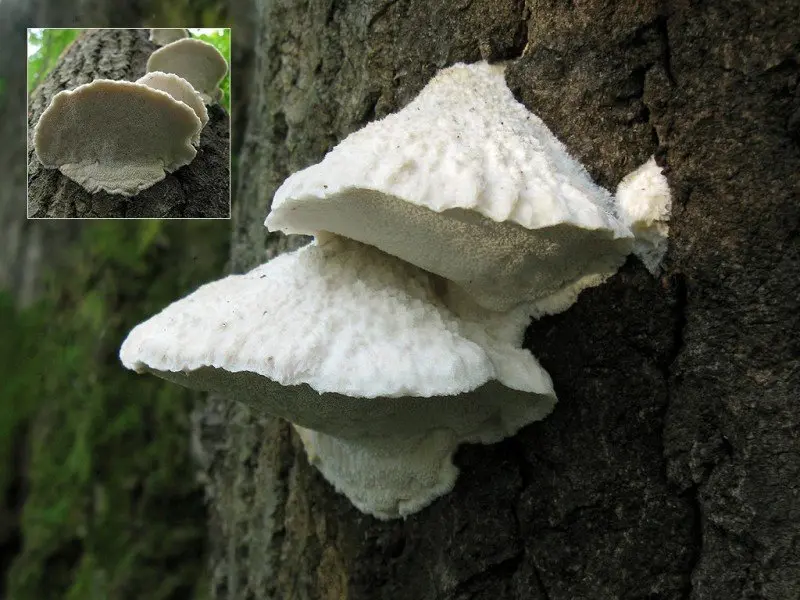fissile aurantiporus (Aurantiporus fissilis)
- Division: Basidiomycota (Basidiomycetes)
- Subdivision: Agaricomycotina (Agaricomycetes)
- Class: Agaricomycetes (Agaricomycetes)
- Subclass: Incertae sedis (of uncertain position)
- Order: Polyporales (Polypore)
- Family: Polyporaceae (Polyporaceae)
- Genus: Aurantiporus (Aurantiporus)
- Type: Aurantiporus fissilis (Aurantiporus fissile)
Tyromyces fissilis

Author of the photo: Tatyana Svetlova
Most often, the tinder fungus aurantiporus fissile is found on deciduous trees, preferring birch and aspen. Also, its single or fused fruiting bodies can be seen in the hollows and on the trunks of apple trees. Less commonly, the fungus grows on oak, linden, and coniferous trees.
Aurantiporus fissilis is quite large in size – up to 20 centimeters in diameter, while the fungus can also have a large weight.
The fruit bodies are either prostrate or hoof-shaped, white, while the surface of the caps often has a pink sheen. The mushroom grows either singly or in whole rows along the trunk of a tree, growing together in some places with hats. On a cut or a break, the caps quickly become pink, even purple.
Hymenophore very large, porous. The tubes of the hymenophore are whitish in color and rounded in shape.
The mushroom has a very juicy fleshy pulp that is white in color.
Aurantiporus fissile is not eaten, as it belongs to the category of inedible mushrooms.
Outwardly, fragrant Trametes (Trametes suaveolens) and Spongipellis spongy (Spongipellis spumeus) are very similar to it. But splitting aurantiporus has larger pores, as well as large fruiting bodies, which immediately distinguishes it from all the tinder fungi of the genus Tyromyces and Postia.









